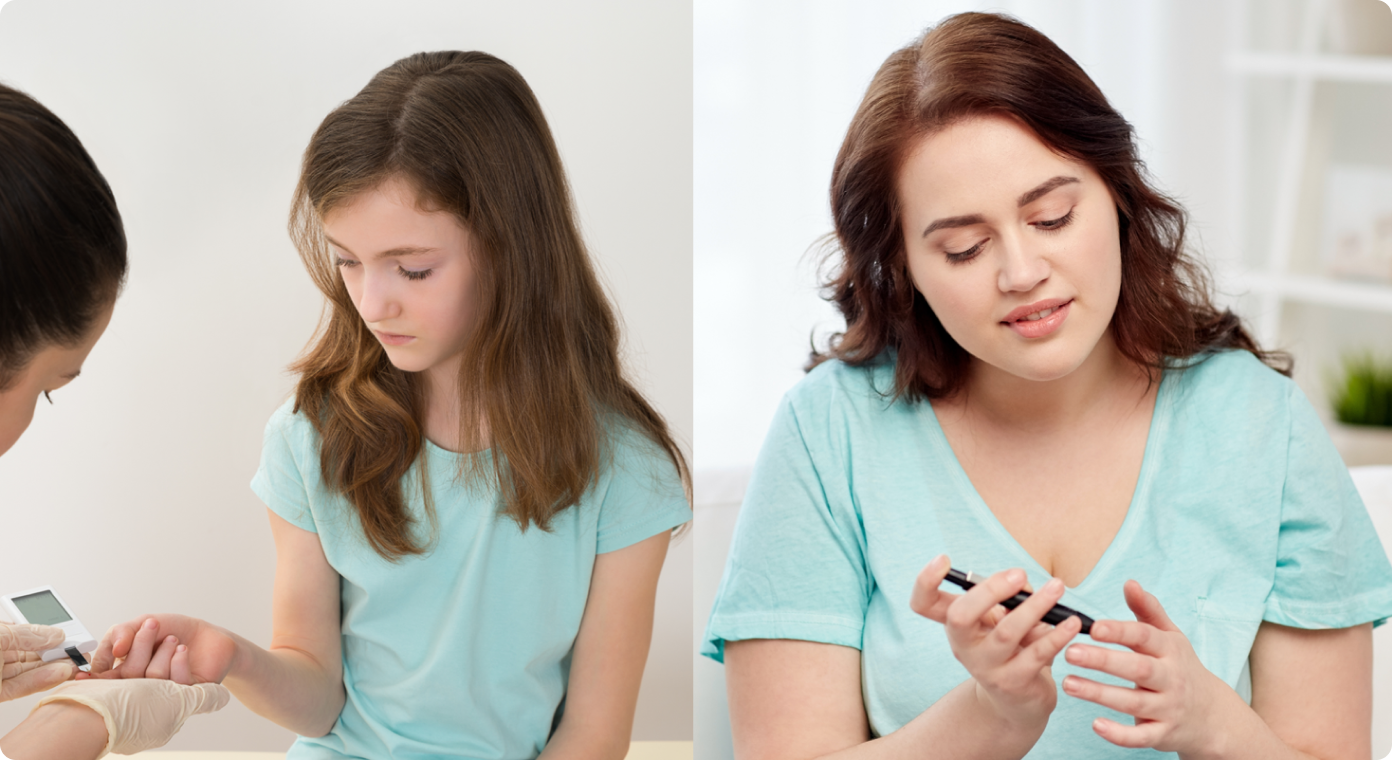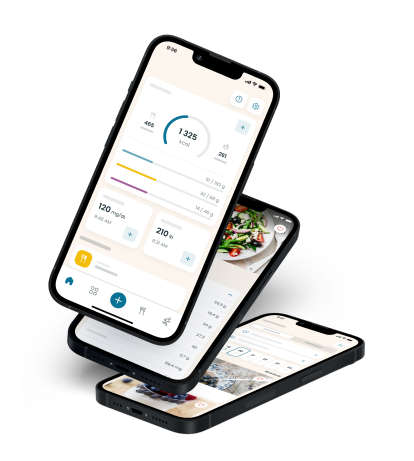Table of contents
What is type 1 diabetes?
What is type 1 diabetes?
Type 1 diabetes is a chronic condition that leads to an abnormal increase in blood sugar (glucose) levels. Cells in the body need insulin to absorb glucose, which results from the breakdown of food. Glucose is the main source of energy for cells, and it normally circulates through the bloodstream to the muscles and other organs that need it.
Insulin is secreted by the pancreas, an organ located behind the stomach. In type 1 diabetes, the immune system mistakenly launches an offensive against beta cells in the pancreas. This damages the islets of Langerhans, the area within the pancreas that secretes insulin.
Without enough insulin, muscles and other tissues in the body cannot use glucose effectively, leading to a variety of symptoms and possibly life-threatening complications. In people with type 1 diabetes, the pancreas may not produce enough insulin, or it may not produce any insulin at all.
Type 1 diabetes can give rise to many complications including:
Heart and blood vessel disease
Nerve damage
Eyesight problems
Kidney disease
Cuts and blisters that don't heal
Foot damage
Skin and mouth conditions
Pregnancy complications
While there is no cure for type 1 diabetes, insulin injections and diet and lifestyle changes enable those with the condition to manage their blood glucose levels and lead a normal life.
Signs and symptoms
The most common signs and symptoms of type 1 diabetes include:
Increased thirst
Urinating often
Feeling hungry despite eating
Significant weight loss in a short period
Mood changes and irritability
Fatigue
Cuts and bruises that don't heal
Blurry vision
Mouth thrush that keeps coming back
These symptoms may occur suddenly. Not everyone with type 1 diabetes has them, so it's important to get yourself or your child checked if you suspect you may suffer from this condition.
Diabetic ketoacidosis
Having undiagnosed type 1 diabetes can lead, in some cases, to ketoacidosis, a serious complication that leads to the formation of ketones in the body. Ketones are acidic substances that occur when your blood glucose levels are very high.
Symptoms of diabetic ketoacidosis include:
Flushed face
Rapid breathing
Dry skin and mouth
Nausea
Stomach pain
Vomiting
Ketoacidosis calls for immediate medical attention.
Signs of type 1 diabetes in small children
Diagnosing type 1 diabetes is easy through a blood test. However, when the patient is a small child, it may be difficult to recognize the condition and get him or her tested.
Signs of type 1 diabetes in a small child include:
- Bedwetting in a child who is potty trained
- Becoming more tired and not wanting to play or join in activities he or she otherwise enjoys
- Constantly asking for something to drink
- Losing weight rapidly despite eating normally
- Diaper rash caused by excessive yeast
- Unusual behaviour such as irritability, moodiness, or restlessness coupled with other type 1 diabetes symptoms

Type 1 diabetes vs. type 2 diabetes
Type 1 diabetes shares many symptoms with type 2 diabetes, resulting from the body's inability to process glucose normally. However, while both conditions are chronic, they differ in their cause, onset of symptoms, and treatment.
In type 1 diabetes, the body doesn't produce insulin or produces very little of it. In type 2 diabetes, by contrast, the body develops insulin resistance but continues to make the hormone in most cases.
Type 1 diabetes symptoms develop rapidly and are difficult not to notice. Type 2 diabetes symptoms tend to be more gradual. Some people don't realise they have type 2 diabetes until a routine blood test shows elevated blood sugar levels or they develop complications.
Unlike type 1 diabetes, which appears predominantly in children and young adults, type 2 diabetes peaks after age 45. That said, it may occur in adolescents and young adults as well.
The risk factors for the two conditions also differ. Family history and weight are shared contributing factors, but type 1 diabetes is thought to be largely a genetic condition with environmental factors. Type 2 diabetes, meanwhile, has more controllable risk factors such as diet, activity level, and lifestyle choices.
Despite the differences between the two conditions, recent research shows that type 2 diabetes may also be an autoimmune disease. As research in this area continues, more similarities between the two may be discovered.
Causes and risk factors
The causes behind type 1 diabetes are thought to be genetics and environmental factors, such as exposure to certain viruses.
However, similar to other autoimmune diseases, the exact cause of the condition has not been determined. What is clear is that people with type 1 diabetes have damaged insulin-producing cells in the pancreas that cannot make sufficient insulin to allow glucose to enter cells.
The known risk factors for type 1 diabetes are:
Family history
Having a parent, brother, or sister with type 1 diabetes increases the risk that you may develop the condition.
Genes
Carrying certain genes further increases the risk. Genes known to trigger type 1 diabetes include variants of the HLA-DRB1 and HLA-DQA1 genes which provide instruction for the production of proteins.
Age
Type 1 diabetes can occur at any age, but it most commonly occurs between the ages of 4 and 7 and 10 and 14 years.
Environmental factors
Viral infections with enteroviruses during childhood are also a contributing factor to the development of the condition.
Vitamin D
Research found that countries away from the Equator, where people are less exposed to the sun, may suffer Vitamin D deficiencies which could contribute to the development of type 1 diabetes.
Diet
Eating foods that quickly raise the level of blood sugar (high glycaemic index foods) may be associated with the disease when it occurs in conjunction with the increased insulin demand that teenagers experience during their growth phases.
Breastfeeding
Research indicates that children who are not breastfed are at higher risk.
Weight
High weight at birth and rapid weight gain from 12 to 18 months may also be risk factors.
Race
Similar to other types of diabetes, type 1 occurs more often in African Americans, Hispanics, Asian Americans, and Indian Americans.
Diagnosis and treatment
Detecting diabetes early is crucial to address the condition before complications develop. The diagnosis criteria and tests used are the same as those for type 2 diabetes:
- A1C Haemoglobin Test - 6.5% or higher on two separate tests.
- Random Blood Sugar Test - over 11.1 mmol/L, along with symptoms of the condition.
- Fasting Blood Sugar - over 7.0 mmol/L on two separate tests.
Many of those with undiagnosed type 1 diabetes present symptoms before their blood test. When diabetic ketoacidosis occurs, the symptoms are so severe that doctors immediately order blood tests.
It's important to note that type 1 diabetes may be initially misdiagnosed as type 2 diabetes. This happens especially in adults, who are less likely to develop the first condition.
Your doctor may not realise you have type 1 diabetes until your diabetes treatment begins and the treatment proves ineffective, or complications arise.
Type 1 diabetes means you need insulin so your body can use glucose more effectively and prevent its accumulation in the blood. Additional medication may also be needed.
Insulin must be injected every day. Insulin pens allow for the self-injection of insulin while minimizing pain at the site of the injection. Insulin is commonly injected into the fat layer under the skin using a short needle.
You can also take insulin through an insulin pump, which delivers it continuously at preset amounts. Similar to a miniature computer, this tiny device consists of a reservoir, a cannula, and control buttons. You can always wear the insulin pump, but you have to alternate the insertion site to avoid infection.
The amount of insulin you must take depends on your blood sugar levels and other factors. Different types of insulin begin working at different intervals and the duration of their effects varies.
While rapid-acting insulin starts working as quickly as 15 minutes after injection, it lasts only up to 4 hours. By comparison, long-acting insulin takes up to two hours to work but its effects may last 24 hours or longer.
Because some people with type 1 diabetes may become resistant to insulin, doctors sometimes also prescribe metformin to reduce the production of sugar in the liver.
Other medication your doctor may prescribe include drugs for lowering cholesterol and high blood pressure and aspirin.
Oral medication for diabetes is currently in development or awaiting FDA approval and may be available before long.
Healthy eating
Dietary changes are often necessary to help maintain blood sugar concentrations within their normal range. Here are some essential type 1 diabetes diet tips:
- Eat fewer refined carbs, such as white bread.
- Avoid processed foods, sugary drinks, and other foods with a high glycaemic index.
- Eat fewer animal and high-fat products.
- Eat more whole grains, fruits, and vegetables.
- Add more low-fat, high-fibre foods to your diet.
- Don't skip meals.
- Eat balanced meals at regular hours.
- Watch portion sizes.
- Count your carbs.
Following a type 1 diabetes eating plan can be more challenging for children and adolescents. A personalised plan can prove useful, allowing for the addition of favourite foods while balancing carbs, protein, and fat.

Aerobic exercise
For adults with type 1 diabetes, at least 150 minutes of aerobic exercise every week can help manage blood sugar levels while improving overall health. This can include brisk walking, jogging, cycling, swimming, and other activities.
Children should get at least 60 minutes of activity every day. Going from sedentary to active with type 1 diabetes may require you to adjust insulin doses or meal plans.
Other lifestyle changes
Other lifestyle changes can make managing type 1 diabetes easier and possibly prevent some complications. These include quitting smoking, drinking alcohol in moderation, and managing stress more effectively through meditation and other techniques. Some people with type 1 diabetes can also benefit from losing weight.
Prevention
There is no established way to prevent type 1 diabetes. But the lifestyle changes used to manage type 1 diabetes can help boost your overall health and make the condition easier to manage.
As research on type 1 diabetes causes continues, some of these lifestyle factors may prove to help ward off the disease. Also crucial is screening for type 1 diabetes if you experience symptoms or have a family history of the disease.
While type 1 diabetes is a serious condition that currently cannot be reversed, there are many things you can do to live a healthy and fruitful life despite having it.
Take a quiz and get your diabetes-friendly meal plan today!

Related articles

What is diabetes?
6 min read•2 January 2024

What is type 2 diabetes?
11 min read•15 January 2024

What is pre-diabetes?
6 min read•26 January 2024

What is gestational diabetes?
7 min read•10 December 2023
Resources
Blog